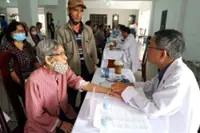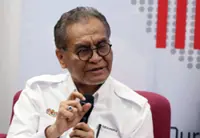All ready: Medical assistants Muhd Firdaus Manaf (left) and Muhammad Faiz Maula preparing equipment at an MRCS hotspot at Al Husna Mosque in Sunway.
PETALING JAYA: An accident happens. A man is hurt. And help is on the way – in just 10 minutes.
Ambulances nationwide will reach patients faster with a pilot project being conducted together with St John Ambulance Malaysia (SJAM) and the Malaysian Red Crescent Society (MRCS).





